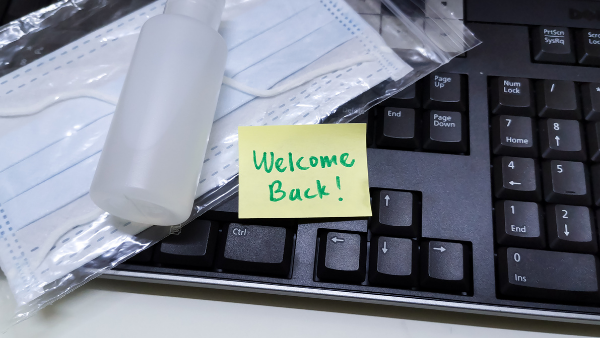Authors
With cases rising, and local lockdowns becoming the norm, it seems that we are quickly backpedalling into those murky months of March and April. In the same vein, the Government has revived its tradition of issuing guidance and directions late on a Friday afternoon, just as the first thoughts of a timely log-off and relaxing start to the weekend are trickling through the nation’s workforce.
The latest Treasury Direction, issued last Friday (2 October 2020), provides further information, and a statutory underpinning to the last weeks of the Coronavirus Job Retention Scheme (‘CJRS’) and the Job Retention Bonus (‘JRB’). Below are your key questions, answered.
When is the last day on which I can make a claim under the CJRS?
Any claim under the CJRS (which comes to a close on 31 October 2020) must be lodged at HMRC no later than 30 November 2020.
What is the JRB? Remind me. It’s been a while since it was announced!
The purpose of the JRB is to ‘enhance and consolidate the purpose of the CJRS’, which is to ‘continue the employment of employees whose employment activities have been adversely affected by the coronavirus’.
In a nutshell, the JRB is a £1,000 one-off taxable bonus, payable to an employer, for each eligible employee whom it has furloughed and kept continuously employed until 31 January 2021.
When can I claim for the JRB?
The period for claiming the JRB begins on 15 February 2021 and ends on 31 March 2021. The Government guidance will be updated in January 2021 with details of how to access the online claim service.
Can I claim the JRB if I intend to utilise the Job Support Scheme for my employees?
Yes. You can claim under both schemes.
What happens if I have repaid the amounts I received under the CJRS?
You will not be able to claim for the JRB in respect of any employees for whom you paid back to HMRC a grant under the CJRS, whatever the reason for the repayment.
How do I know if my business (or my employees) is eligible to claim the JRB?
You must be a ‘qualifying employer’, in that your business must have:
- A PAYE scheme registered on HMRC’s ‘Real Time Information’ (RTI) system; and
- Complied with its PAYE obligations to file PAYE accurately and on time under RTI reporting for all employees between 6 April 2020 and 5 February 2021.
If you are a ‘qualifying employer’, you can claim for employees who:
- Have had a previous claim under the CJRS made in respect of them.
- Have been employed continuously by you from the end of the last period during which they were furloughed, right through to 31 January 2021.
- Are not serving notice of termination of employment on 31 January 2021 (this includes those who are serving notice of retirement).
- Have been paid a minimum of £1,560 (gross) throughout the tax months of:
- 6 November to 5 December 2020
- 6 December 2020 to 5 January 2021
- 6 January to 5 February 2021.
It is important to note that you must pay your employee at least one payment of taxable earnings (of any amount) in each of the relevant tax months.
The minimum income criteria, which we have set out above, apply regardless of:
- How often you pay your employees;
- Any circumstances which may have reduced an employee’s pay in the relevant tax periods, such as statutory or unpaid leave.
What payments are included in the minimum income threshold of £1,560 gross?
Only those payments recorded as ‘taxable pay’. This means pay which is reported to HMRC as a single figure through Full Payment Submissions via RTI.
Is my business barred from claiming the JRB if I have previously made an incorrect claim under the CJRS?
In short, yes, you will no longer be eligible to claim.
What happens if my business has taken on employees under TUPE? Can I still claim for transferred employees?
In most cases, it is likely.
To claim the JRB for those employees who have been transferred under TUPE, you must have furloughed and successfully claimed for them under the CJRS, as their new employer. They must also meet all the usual eligibility criteria for the JRB. In effect, this means that you will not be able to claim the JRB for any employees who are transferred to you after the CJRS closes on 31 October 2020.
It may also be possible for you to claim for the JRB in circumstances where the PAYE business succession rules apply, or where the employees were associated with the transfer of a business from the liquidator of a company in compulsory liquidation, where TUPE would have otherwise applied, but for the liquidation.
What can I do now, in order to make sure I can claim for the JRB?
In addition to ensuring that your business, and your employees, meet the eligibility criteria set out above, you should:
- Keep your payroll up to date and make sure you report the leaving date for any employees who stop working for you before the end of the pay period in which they leave.
- Use the ‘Irregular Payment Pattern Indicator’ on RTI, in respect of any employees not being paid regularly.
- Comply with all requests from HMRC to provide any employee data for past CJRS claims.
This article is for information purposes only and is not a substitute for legal advice and should not be relied upon as such. Please contact James Baker or Rachael Lloyd to discuss any issues you are facing.


